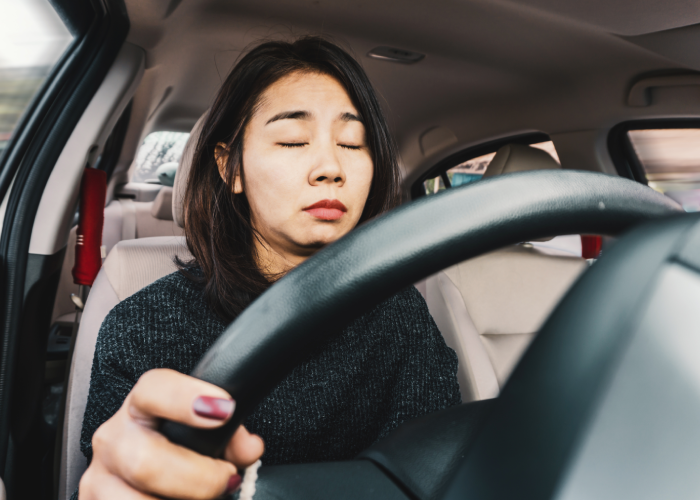The High Risk of Drowsy Driving
Have you ever fallen asleep while driving? Your eyelids get heavier and heavier, as you try to fight it. When you jolt awake, it’s quite concerning. You’re lucky if you haven’t already had a traffic accident, if you’ve felt drowsy while driving.
The National Highway Traffic Safety administration estimates that in 2017, 91,000 police-reported crashes involved drowsy drivers. These crashes led to an estimated 50,000 people injured and nearly 800 deaths.
Also, an estimated 5,000 people died in 2015 in crashes involving drowsy driving, according to a Governors Highway Safety Association report.
A study by the AAA Foundation for Traffic Safety estimated that 328,000 drowsy driving crashes occur annually. That’s more than three times the police-reported number. The same study found that 109,000 of those drowsy driving crashes resulted in an injury and about 6,400 were fatal. The researchers suggest the prevalence of drowsy driving fatalities is more than 350% greater than reported.
Obstructive sleep apnea (OSA) has been found to cause this drowsiness in many cases, increasing risk for these serious traffic accidents. And yet, this risk is reduced when sleep apnea is treated effectively using continuous positive airway pressure (CPAP) therapy.
2.5 times higher risk of traffic accidents
One study showed that patients with sleep apnea were nearly 2.5 times more likely to be the driver in a motor vehicle accident, compared with a control group of other drivers in the general population.
A total of 1478 sleep apnea patients were included in the study, with a control population of 635,786 people in the general population in Sweden — including 21,118 people with at least one motor vehicle accident during the study period.
Sleep apnea patients were involved in 82 motor vehicle accidents while driving during the study period, including 56 accidents in the 5 years prior to diagnosis and 26 accidents in the 5 years after diagnosis.
Researchers also found that the risk of motor vehicle accidents was reduced by 70 percent among sleep apnea patients who used CPAP therapy for an average of at least 4 hours per night.
“Excessive daytime sleepiness is a common symptom of obstructive sleep apnea, which can cause you to awaken in the morning feeling tired and unrefreshed despite a full night of sleep,” said American Academy of Sleep Medicine President Dr. Timothy Morgenthaler. “Effective identification and treatment of sleep apnea is essential to reduce avoidable, life-threatening accidents caused by drowsy driving.”
Higher risk of highway accidents
A study in the New England Journal of Medicine also found a strong link between OSA and traffic accidents. Those researchers studied 102 drivers who received emergency treatment at a hospital after highway traffic accidents.
They compared their results with 152 patients randomly selected from primary care centers. Each patient received sleep apnea tests called respiratory polygraphy and polysomnography to determine if they had sleep apnea.
Those with sleep apnea symptoms were at very high risk for traffic accidents, even after alcohol consumption, vision problems, medications, and other factors were taken into account.
Researchers also found that alcohol consumption on the day of the accident (even small quantities) had an important modifying effect, amplifying the relation between sleep apnea and traffic accidents.
Risk to you, your family, other drivers
This risk is serious, as it affects the sleepy driver and everyone around them. If you have “driven drowsy,” it’s critical to take a sleep apnea test — to find out if you need treatment. As these studies show, treatment for OSA is very effective — and could save your life, literally.
Loud snoring is one of the key symptoms to sleep apnea.
Is it possible you have sleep apnea? A consultation with a sleep specialist at Millennium Sleep Lab can guide you to getting answers, including at-home sleep testing. This is an easy way to learn if you would benefit from treatment.
To speak with a sleep specialist, and start getting answers to your sleep problems, contact us at Millennium Sleep Lab.
SOURCES:
https://www.nhtsa.gov/risky-driving/drowsy-driving
https://aasm.org/risk-of-motor-vehicle-accidents-is-higher-in-people-with-sleep-apnea/
